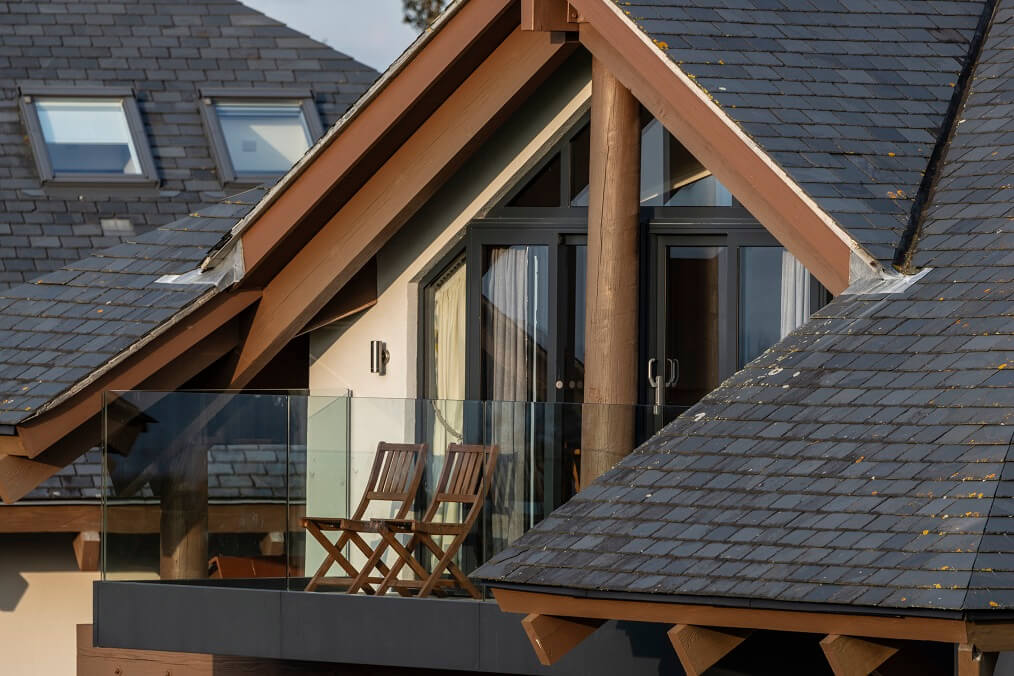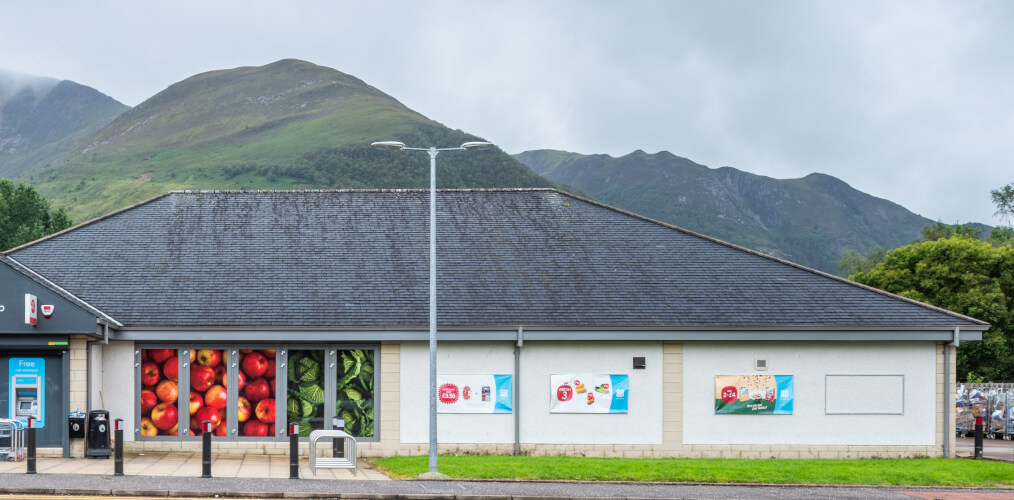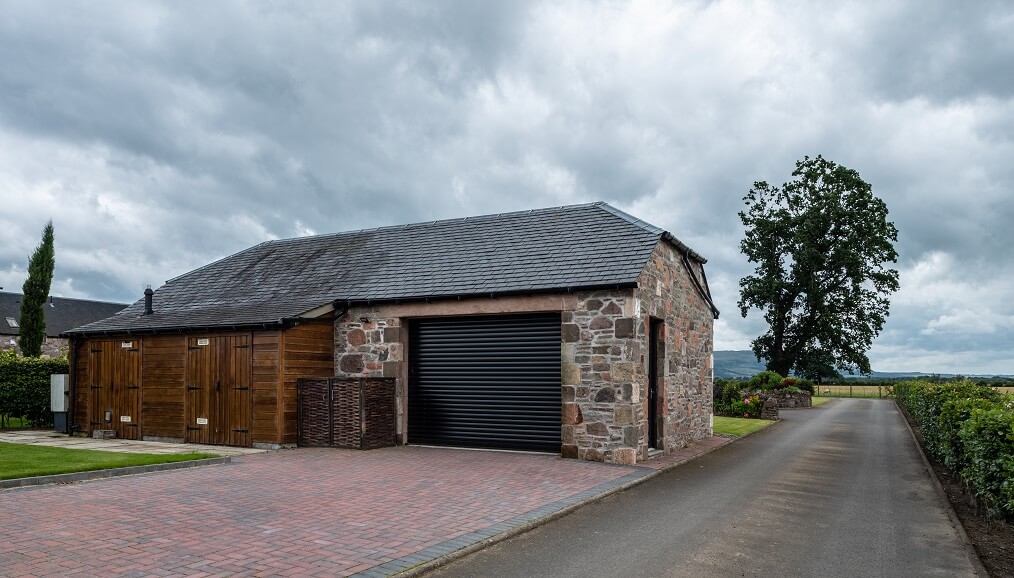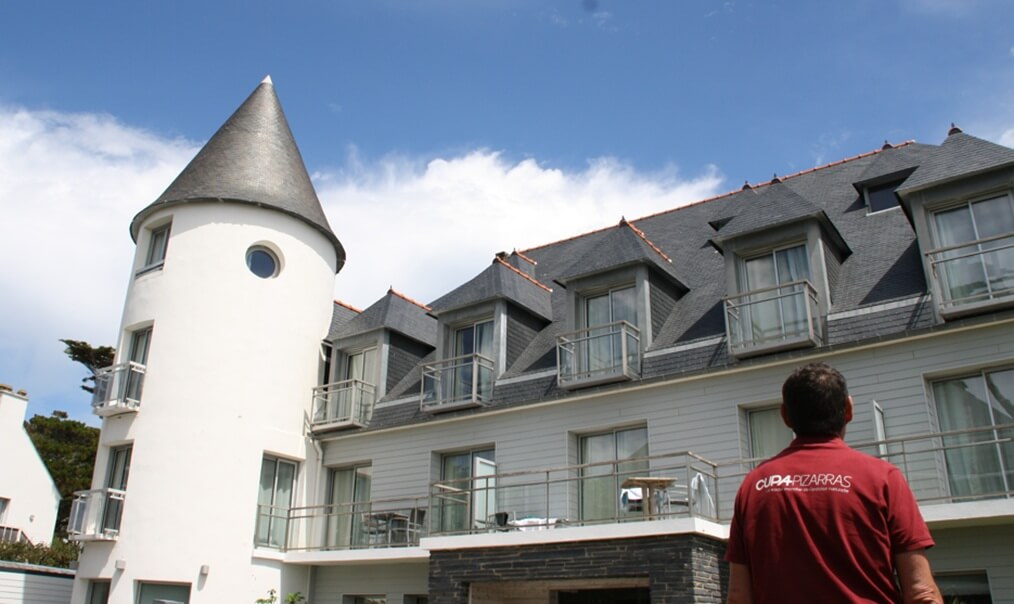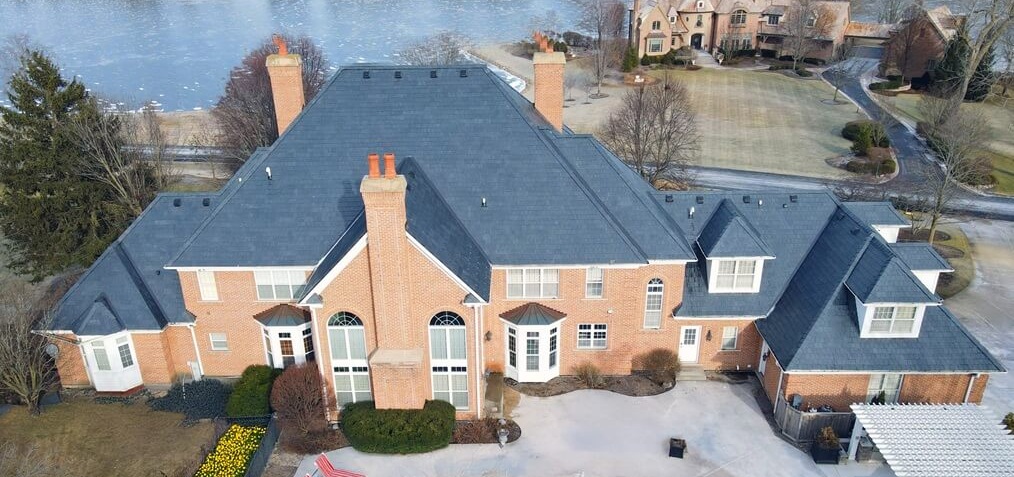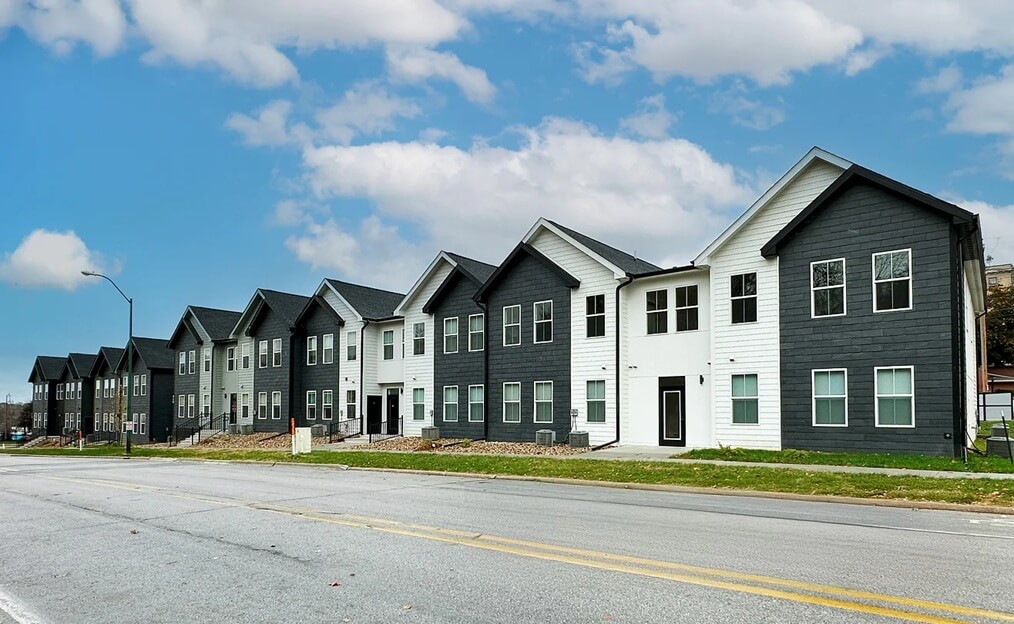How do you clean a slate roof?
A well-installed slate roof can last without any problems for decades or even centuries. Slate is a durable, compact, dense, fine-grained rock, but above all a natural product, which makes it unique.
Each slab is unique and slightly different from the rest with its own character. As it is a natural rock, slate is alive too, integrating and adapting into its environment.
As with any material exposed outdoors, build ups of atmospheric dust, plant growth or even chromatic changes can occur. You can clean dirt build ups or plant growths relatively easily, because they respond very well to mechanical methods.
A pressure washer should suffice in most cases, although you need to bear two things in mind before you start cleaning it this way.
Firstly, take great care when moving around on the roof. Slate roofs are not designed for walking on. Only qualified professionals (slate roofers) know how to do this without damaging the structure or putting themselves at risk.
Secondly, avoiding applying pressurised water from the bottom upwards is essential, as you would only manage to get it under the roof, along with the dirt you want to remove, if you do it that way. These two tips may seem simple, but they are often not taken into consideration.
It is advisable to think about the precautions you need to take before you set about cleaning the roof. In addition, cleaning those plant growths off does not guarantee that they will not reoccur. In fact, it can promote their regrowth. Lichens, fungi and mosses attach themselves to the substrate, in this case slate, by means of microscopic roots called hyphae. These hyphae penetrate one or two millimetres into the slate, piercing the surface.
When plant growths are removed, this microscopic pitting is exposed, presenting a much easier surface for new growths to colonise, as they have much more surface area. So, cleaning the roof is only a temporary solution in any case.
Chromatic alterations are much less common. These alterations are due to stabilising reactions of some minerals that may be present in the slate (iron sulphides or carbonates), which under certain environmental conditions can be transformed, creating patinas.
These patinas form on the surface like a protective skin or crust, protecting the rock. It is very rare for them to affect the integrity of the slate. They only involve a change in colour, as I will never tire of repeating. Its appearance does not imply any deterioration, just adaptation to atmospheric conditions.
It is sometimes necessary to eliminate these types of alterations though. I do not recommend it myself, as it would mean removing the protection that has formed on the rock. Furthermore, as these types of alterations are caused by environmental factors (basically atmospheric pollution and urban emissions), you will never eliminate the causes, so they most likely form happen again.
If you still want to take action on them, brushing with a slightly acidic product is advisable, following the similar recommendation as above for dust build ups and plant growths. There are lots of products of this type on the market but you must be careful, as some can affect metallic parts of the roof, promoting rusting.
I have been able to confirm the effectiveness of these products in the laboratory over the years. To achieve an acceptable result without compromising other parts of the roof, you need to scrub with a brush and then rinse thoroughly.
If you apply the product and leave it to work for over an hour, there is a serious risk of rusting and chemical alterations to the rest of the roof. The cleaning powers of all of them are similar, while their prices are not, which can become significant.
Going by my personal experience, the best product I have found for cleaning roofs, and which has met all my expectations, is acetic acid. It is cheap, safe and as effective as the rest of the products. You can get hold of it very easily too, because you can find it almost anywhere under its common name – vinegar.
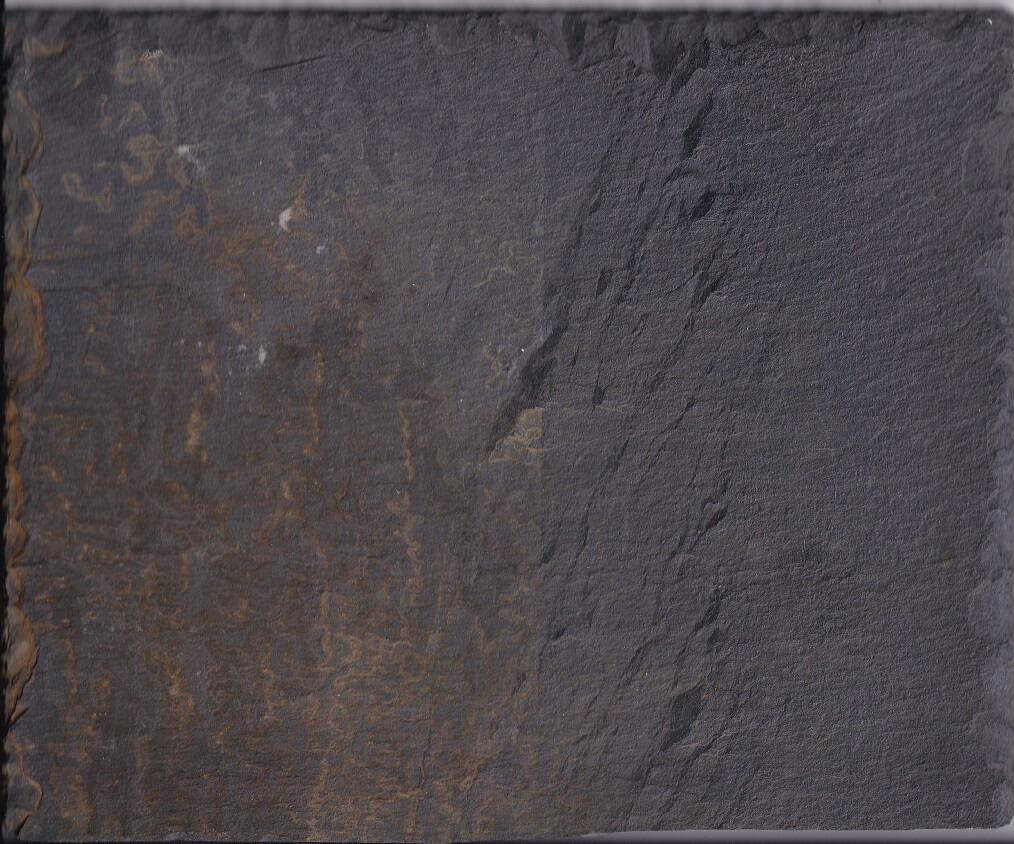
Yes, dear reader, vinegar has the slightly acidic nature that lets it clean slate. There are no special recommendations for using it (except for not drinking it) and it works perfectly.
In short, the answer to the question at the start of this post – how do you clean a slate roof? – is carefully, with a thick brush and vinegar. It is that simple. But bear in mind that, after a few years, the roof is likely to undergo alteration again.

